While most computer manufacturers offer up to a TB of internal storage, photographers and content creators rely on external hard drives to store and share large files. The problem occurs when the connected external hard drive is not showing up on your Windows 11 PC. If you encounter the same frequently, here are the best ways to fix the problem.
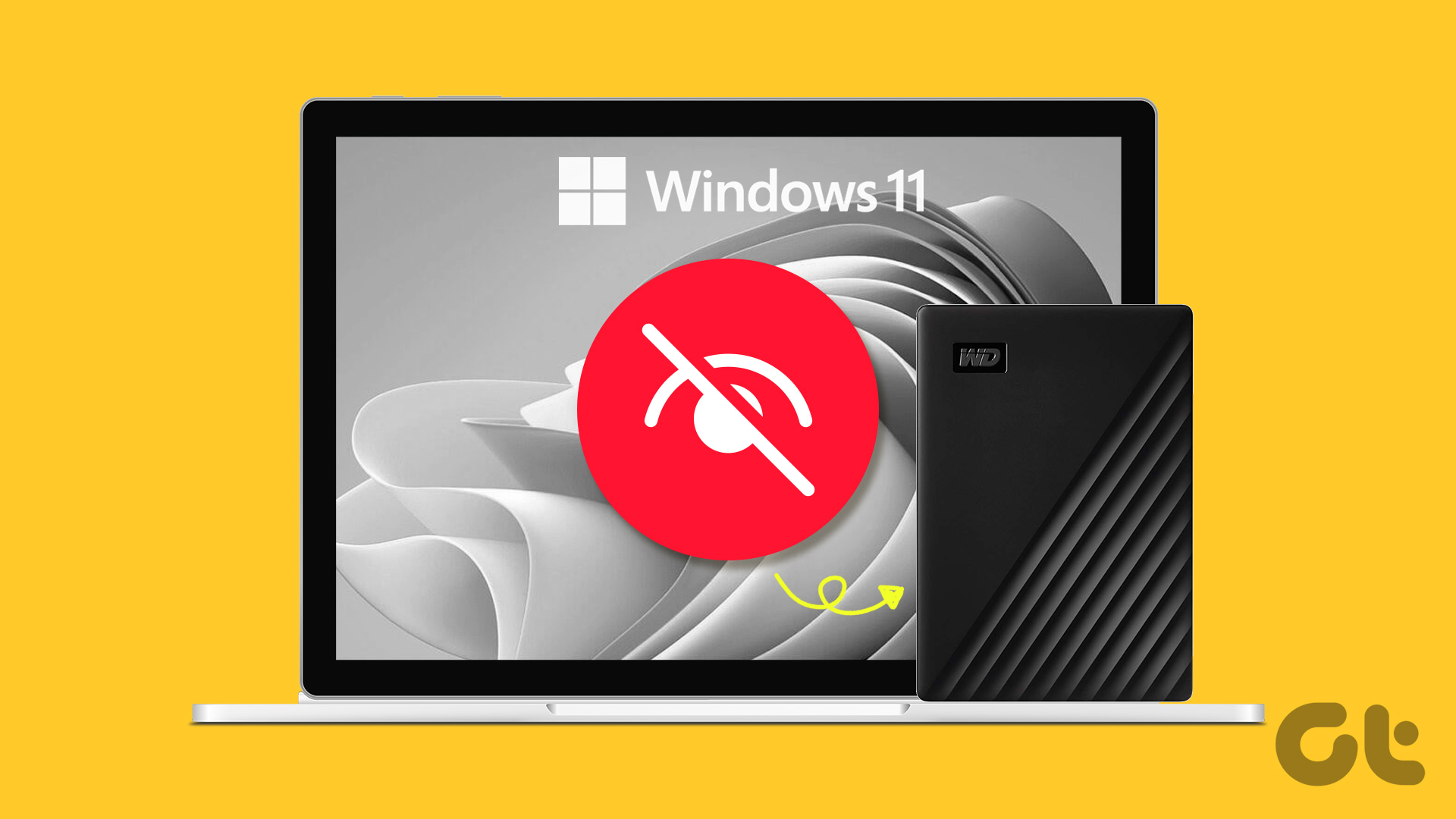
You cannot access files on your hard drive when it fails to connect to your computer in the first place. Instead of using another computer or finding inconvenient ways to access your files, follow the steps below to troubleshoot external hard drive not showing up in Windows 11.
1. Check USB cable and connection
Using the supplied cable to connect your external hard drive to the PC is a good idea. You can avoid using another company’s hard drive cable. Also carefully inspect the cable. Get a new cable if you notice any physical damage to the original one.
Due to poor connection, you may not see external hard drive in Windows File Explorer menu. You need to remove the hard drive and reconnect it properly. Some external hard drives come with a dedicated power button. Make sure to turn on the device after connecting it to the PC.
2. Use another USB port
Most Windows PCs come with multiple USB-A ports to use. If a specific USB port is malfunctioning or not detecting the hard drive, disconnect the device and connect it to another port.
3. Run the Devices and Hardware Troubleshooter
Windows contains a dedicated troubleshooter to repair hardware connections. Here is how you can use it and fix external hard drive not showing up in Windows 11.
Step 1: Press Windows + R keys to open the Run dialog box.
2nd step: Type msdt.exe -id DeviceDiagnostic in the Run box and press Enter.

Step 3: Click Next in the dialog box.

Let him troubleshoot, diagnose, and fix the problem.
4. Use Disk Management Tool
If you don’t see the connected drive in the File Explorer menu, use the Disk Management tool in Windows. You can check all drives connected to your computer, check size, check partitions and other statistics. You can also use Disk Management tool to activate your hard drive. Let us show you how.
Step 1: Press the Windows key and search for Disk Management.

2nd step: Press Enter and open the tool. Connect your external hard drive to your PC.
Step 3: If your hard drive is offline, it will not appear on the computer.
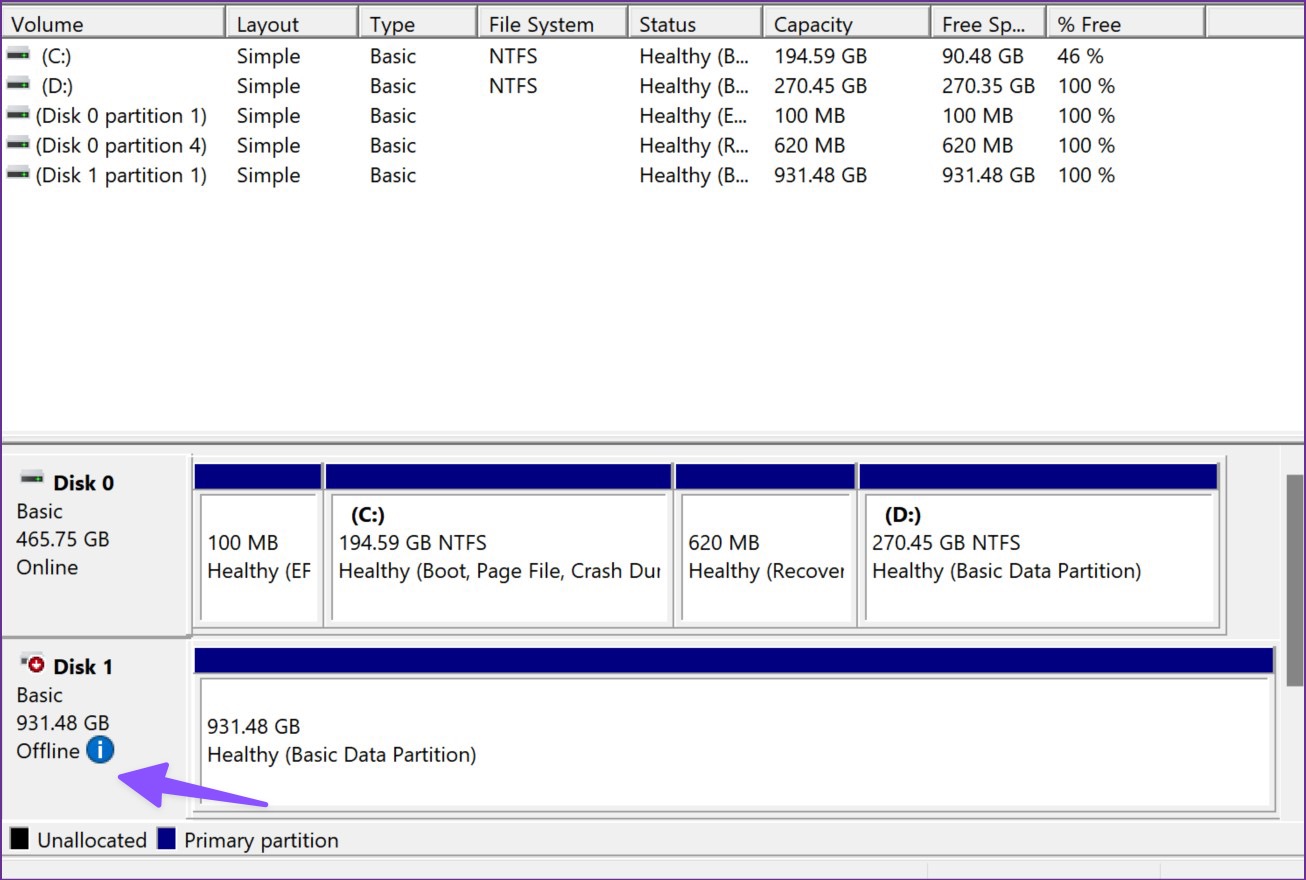
Step 4: Right-click on the name of your hard drive and select Online from the context menu.

The system will open the contents of the hard drive in a new file explorer window.
5. Use Command Prompt
You can use the command prompt to troubleshoot issues with your drives. The command can help you troubleshoot connection issues with an external hard drive.
Step 1: Press the Windows key and type ordered to search for it in Windows Search.
2nd step: Select “Run as administrator”.

Step 3: Type chkdsk /fX: (replace X with your corresponding drive letter) and press Enter.

Run the command, let the system troubleshoot drive issues, then try again.
6. Enable Device from Device Manager
If the system disables your external hard drive, you won’t find the same in the File Explorer menu. Here is how you can enable it using Device Manager.
Step 1: Right-click on the Windows key to open Device Manager.

2nd step: Expand disk drive and find your hard drive in the list.

Step 3: Right-click on it and select Enable Device from the context menu.
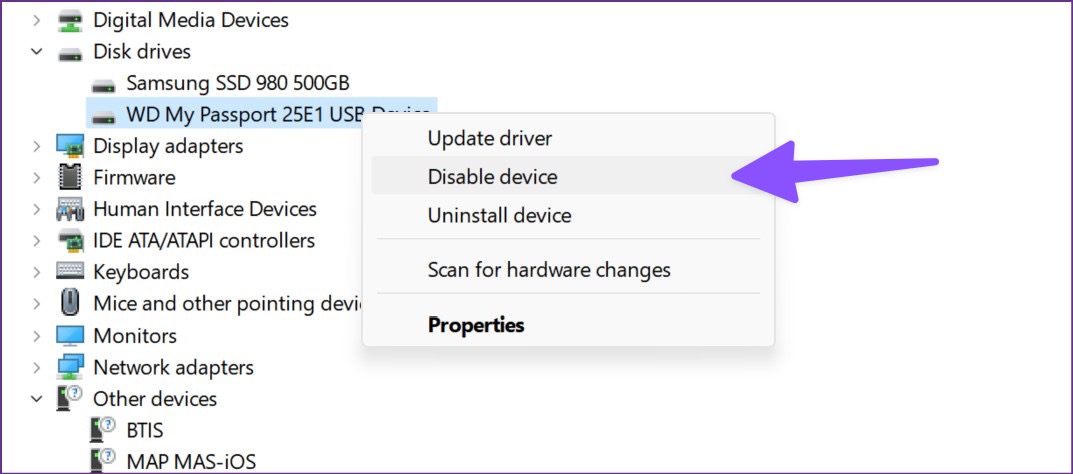
7. Reinstall the drivers
It’s time to reinstall hard drive drivers if it still not showing up in Windows 11.
Step 1: Open the Device Manager menu (refer to the steps above).
2nd step: Find your hard drive in the list of disk drives and right click on it.

Step 3: Select Update Driver from the context menu.

Step 4: Select ‘Search automatically for drivers’.
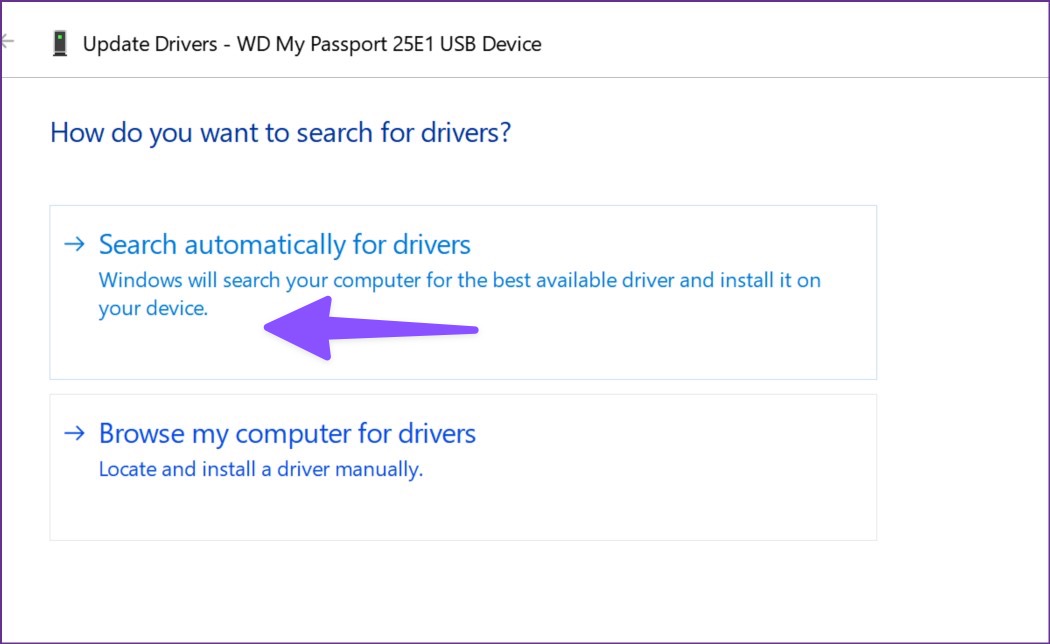
Device Manager will start searching for the latest drivers on your computer. If it does not detect any, return to the same menu.
Step 5: Select Uninstall device from the same menu and confirm your decision.
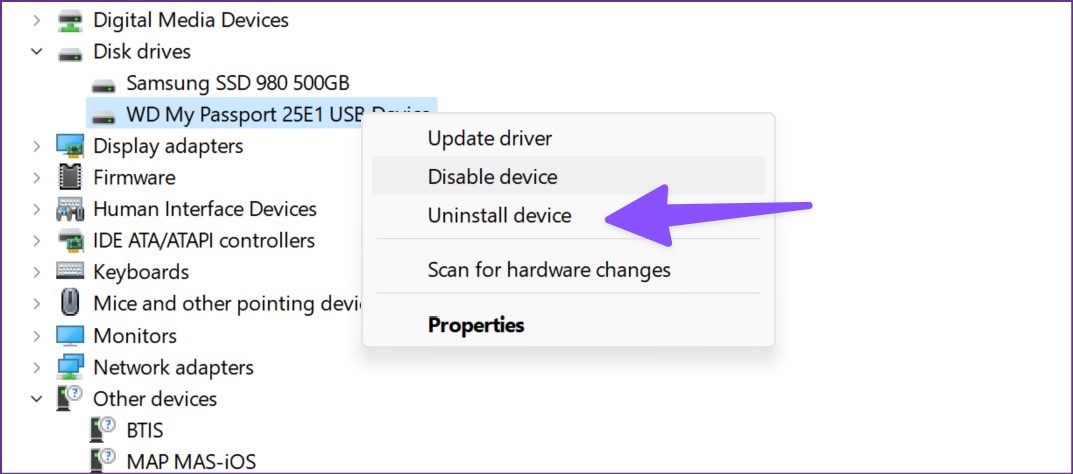
Restart your computer and reconnect your external hard drive. This should trigger a new installation of the drivers on your PC.
8. Enable Automount
Whenever you connect a new external hard drive to a Windows 11 PC, it assigns a device letter and maps the location of the drive. The process is called automatic mounting. You can enable automatic mounting of drives (especially external drives) using MountVol tool to fix external hard drive not showing up in Windows 11.
Step 1: Open the command prompt as an administrator (check the steps above).
2nd step: Run the following command.

mountvol /E
This will activate the automount feature. You can remove all previously assigned drive letters by running the ‘mountvol /R’ command.
Restart your PC and try connecting an external hard drive again.
9. Update Firmware
Popular hard drive OEMs like Western Digital offer dedicated software to install the latest drivers and ensure compatibility with the latest software like Windows 11. You can go to the OEM (Original Equipment Manufacturer) website and download the appropriate firmware to connect the hard drivers without any problem.
Access your external hard drive
If none of the tricks work, it’s time to format your external hard drive and erase all data to start fresh. Alternatively, you can borrow or obtain another hard drive to back up your existing data on your computer. You’ll need to take care of the external hard drive when transporting it, make sure you don’t bend the supplied USB cable, and get into the habit of safely disconnecting the drive using Windows’ eject function.
